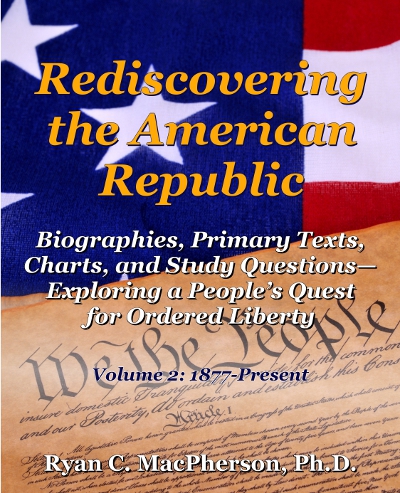Organizational bylaws typically state that Robert’s Rules shall govern the conduct of their meetings. I first learned the parliamentary procedures codified in Robert’s Rules of Order as a high school student. Mr. Fenske, as faculty advisor to the Student Council, required that we conduct our meetings by saying things such as “I move that we … ,” “I second that motion … ,” “All in favor say, ‘Aye’ … ,” etc. Since that time, Robert’s Rules has guided my participation in numerous organizations, in both the nonprofit and for-profit sectors. But who, exactly, was Robert? And what benefit does an organization receive by following his rules?
Meet Robert, the Man behind the Rules
Brigadier General Henry Martyn Robert (1837–1923) excelled not only in military leadership but also in the leadership of church organizations and other civic groups. It was not, however, always so. When the chairmanship of a meeting was thrust upon him unexpectedly in 1863, he “plunged in, trusting to Providence that the assembly would behave itself. But with the plunge went the determination that I would never attend another meeting until I knew something of … parliamentary law” (Robert’s Rules of Order, Newly Revised [2000], xxxv).
Robert found this promise more challenging to keep than he had expected. After finding a brief discussion of parliamentary procedure in one book, he thought he had a firm grip on the basics. But then in 1867, promoted to Major, he was stationed in San Francisco among a diverse population comprising people from every state in the union and many foreigners as well. He quickly discovered that they lacked common ground as what constituted a fair hearing of each other’s opinions. So Robert looked more deeply into the heritage of parliamentary law, comparing the practices of England’s Parliament with those of the U.S. House and the U.S. Senate. Robert produced a 16-page booklet as a stop-gap measure, but he soon realized that in order for the same individuals to serve effectively in more than one organization, it would be helpful for all organizations to adopt uniform procedures for their meetings. From his ambition to secure orderly and consistent parliamentary practices across all organizations grew what today is a nearly 700-page manual.
Why Follow Robert’s Rules?
Despite the daunting details of Robert’s Rules, two basic principles—of obvious value—shape the entire project:
- Every person deserves to be heard so long as at least one other person agrees to listen.
- No one should be able to stall a meeting when the majority of people present are ready to move on.
To operationalize the first principle, a speaker desiring to propose a new course of action should begin with, “I move that we [do thus and such].” The chair then requests a “second” for that motion. If someone says, “I second that motion,” then according to the first principle stated above, the assembly should take time to listen to reasons offered in support of that proposal, as well as to consider reasons against it, in order to make a well-reasoned decision.
If, however, no one offers a “second,” then the first person should politely sit down and permit the assembly to move to a different topic. Similarly, even if there has been a “second” to the motion, when the majority of the assembly has heard enough of the matter, then a vote should be called so that the motion may be appropriately disposed without wasting further time. This timely disposal of business satisfies the second principle stated above.
One of the interesting developments of the principle that every person deserves to be heard so long as at least one other person agrees to listen is that a motion coming from a committee does not require a “second.” After all, the committee consists of multiple people, so by definition whatever the majority of the committee members support already has the support of at least two people.
The nuanced intricacies of Robert’s Rules sometimes make for some challenging mind-games, as when a motion to amend gets entangled with a motion to lay on the table, and so forth. For that reason, the chairperson of any meeting should become familiar with the rules as to which motions take priority over others, which motions are debatable versus which motions require an immediate vote, etc. A good chairperson also will clearly chart the available paths for the assembly, for example by saying:
The motion to amend now comes to a vote. A vote in the affirmative shall have the effect of amending the main motion by inserting thus-and-such in the first sentence and striking so-and-so from the last sentence. A vote in the negative shall have the effect of preserving the main motion in the form originally presented. Following this vote, we will resume discussion of the main motion itself, whether in its original or amended form, as determined by this present vote. All in favor of amending the main motion say, ‘aye.’ All opposed, say ‘no.’ … The ayes have it. Therefore, the main motion now is amended to read as follows. … ”
General Robert himself summarized the rationale behind his rules in terms of preserving the qualities of democratic governance:
The great lesson for democracies to learn is for the majority to give the minority a full, free opportunity to present their side of the case, and then for the minority, having failed to win a majority to their views, gracefully to submit and to recognize the action as that of the entire organization, and cheerfully to assist in carrying it out, until they can secure its repeal. (xliv)
For the minority to be willing to respect the will of the majority, the majority will first have to demonstrate its own respect for one of the most ancient principles of the western legal tradition: the rule of law, that is, a commitment to fair and transparent procedures. Gen. Henry Martyn Robert demonstrated such a commitment, and for that reason, his rules deserve to be followed still today. While a small organization of like-minded persons may discover that Robert’s Rules can be streamlined significantly without any loss of benefit, both the majority and the minority of even the most bitterly divided organization can at least agree on this: that having all 700 pages available gives peace and order a fighting chance. And that was Robert’s hope.
I move that we thank Robert for his rules.
Dr. Ryan C. MacPherson is the founding president of Into Your Hands LLC and the author of several books, including Rediscovering the American Republic (2 vols.) and Debating Evolution before Darwinism. He lives with his wife Marie and their homeschooled children in Casper, Wyoming, where he serves as Academic Dean at Luther Classical College. He previously taught American history, history of science, and bioethics at Bethany Lutheran College, 2003–2023 He also serves as President of the Hausvater Project, which mentors Christian parents. For more information, visit www.ryancmacpherson.com.
Will you second that motion?


